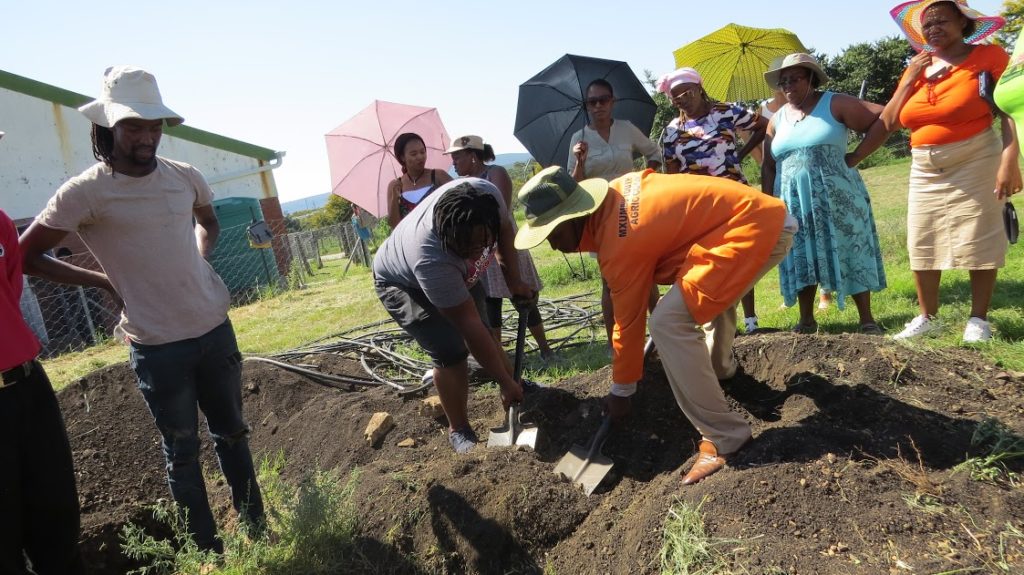By Carey Finn
We may have seen a bit of rain over the past few weeks, but with our own Day Zero still looming, Grahamstown cannot afford to relax.
As Tichaona (Tich) Pesanayi, Lead Researcher at the Amanzi for Food project, says, “the rainy seasons aren’t so rainy anymore,” meaning it’s vital you have enough water for your veggie (or even non-edible) garden.
“We need to extend our ‘rainy season’, because it’s become unreliable,” says Pesanayi, “and for us to be able to do that we need to harvest rainwater whenever we can and store it – both in a protected reservoir and also in the soil.”
To that end, he encourages readers to try the following at home.
- Mulch, mulch, mulch
Mulching, or adding a kind of cover to the soil, has a huge range of benefits. It helps slow down evaporation, cool down the soil, preserve moisture and suppress weed growth.
And it’s easy to do. Simply collect fallen leaves (no gum leaves or pine needles, though), grass cuttings (without seeds, or you can expect a “lawn”) or straw, and make a 5-10cm layer on your soil beds. Most people forget about the paths, but it’s important to mulch these too. You can mulch before planting or, gently, when your plants are already growing, and top up whenever you see patches appearing in your cover.
- Make a fertility trench bed
This is a planting bed that goes 45-65cm deep, with alternating layers of dry grass or weeds, manure or compost, wood ash, and sub-soil (dug up from underground). You can add green grass cuttings, veggie peels, cardboard, paper and even bones to the mix. Finish the bed off with a mix of topsoil and compost/manure. Wait two-three months and then get planting. The trench bed holds onto soil moisture for much longer than a regular bed, and need to be watered two-three times less often. It also keeps your soil nice and fertile. You shouldn’t have to fertilise for the next three years or more.
- Harvest rainwater “in the field”
It’s not just about JoJo tanks and the odd bucket. There are other opportunities for catching – and keeping – rainwater in your garden.
One option is to dig a number of small (roughly 30cm x 30cm) basins – also known as matamo or ipitsi, or homestead ponds. When it rains, water will collect in these little ponds and seep into the soil, helping your garden grow. You can dig these anywhere you have space, but close to thirsty plants (such as herbs, tomatoes, chard and spinach) is ideal.
You can also line the basins with a barrier to keep water around for longer, and use it for hand-watering. In this case, though, it pays to make the ponds bigger – say 2m x 2m across, and half a metre deep. A layer of plastic will hold the water, although in areas where there is a lot of clay, this may not be necessary.
The Amanzi for Food project, funded by the Water Research Commission and led and implemented by the Environmental Learning Research Centre at Rhodes University, focuses on helping people who grow food (on scales from micro to massive) to try different ways of harvesting, storing and using rainwater to boost food production. You can find awesome ideas at: http://amanziforfood.co.za/
Do you grow veggies? Amanzi for Food wants to hear from you!
- Tich and the team would love to hear about your experiences with water. Email tichpesanayi@yahoo.com and you could be featured on the website. English, Afrikaans and isiXhosa contributions are welcome!


